Dracaena compact: description and care
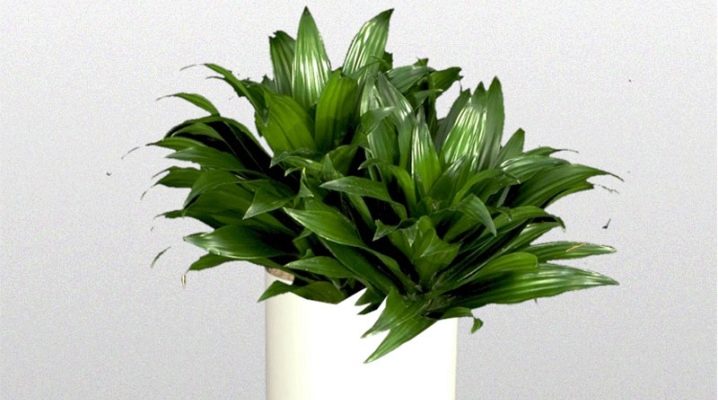
One of the favorite plants of gardeners is the compact dracaena or exotic dracaena. The variegated leaves of this shrub look great in the interior of an apartment, decorated in almost any design. And unpretentious care makes it the standard for home maintenance.

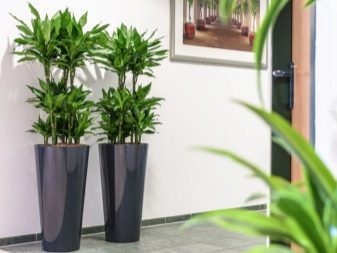
Peculiarities
The first mention of dracaena is found in the work of Carl Linnaeus, published in 1767 after his visit to Africa and the Canary Islands. It was this great biologist who gave it such a colorful and intriguing name. In translation, the word "dracaena" means "female dragon". This is not surprising, because this plant in its natural environment can grow up to six meters in height and has a very unusual appearance, somewhat reminiscent of a dragon from legends.
The Russian name, according to Dahl's dictionary, sounds like "dragon". It was in the 19th century, after the publication of a scientific article by Linnaeus, that some types of dracaena began to be cultivated as ornamental plants for home and garden.
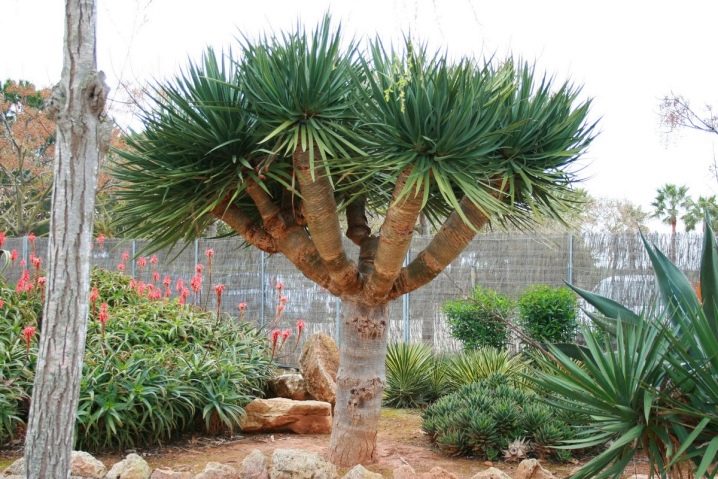
Today, the subspecies of dracaena compacta is one of the hundred species of dracaena known to the world. Unlike its “brothers”, the compacta has a more docile disposition, and is ideal for growing at home. This plant is an evergreen shrub, therefore, with its appearance, dracaena can delight the gardener all year round. Thanks to the glossy leaves that gather at the top into a rosette, and the tall, strong trunk, it can be confused with the palm subspecies, but this is not the case. Dracaena belongs to the succulent family.
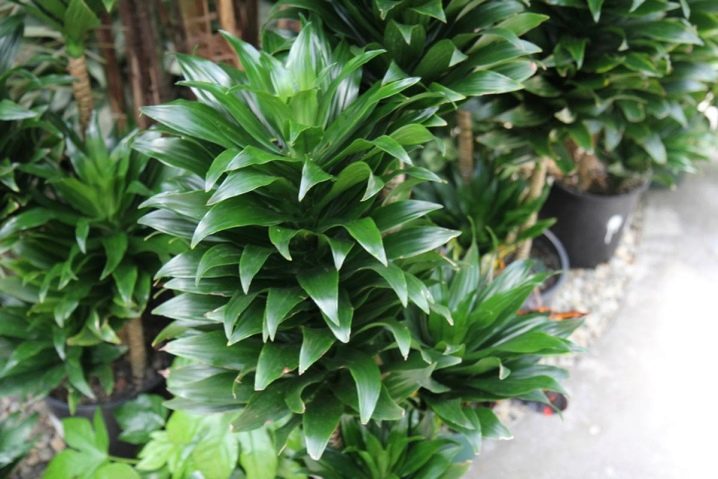
It is worth paying attention to the fact that at home this shrub is capable of reaching a height of about two meters. Therefore, before buying, you should think about its location in the interior of an apartment or house.
It is interesting that in the natural environment the dracaena compacta is capable of blooming. It has dainty white flowers that give off a delicate, pleasant scent. At home, unfortunately, it is almost impossible to achieve flowering.
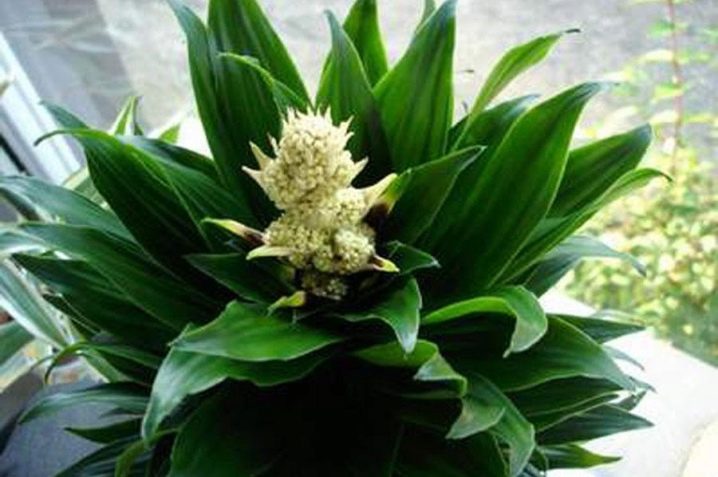
Conditions of detention
Despite the ease of keeping the compact dracaena shrub, it is necessary to follow a number of rules that will allow it to feel good and delight its owner with a healthy look. It should be remembered that proper home care is the key to the longevity of any plant.
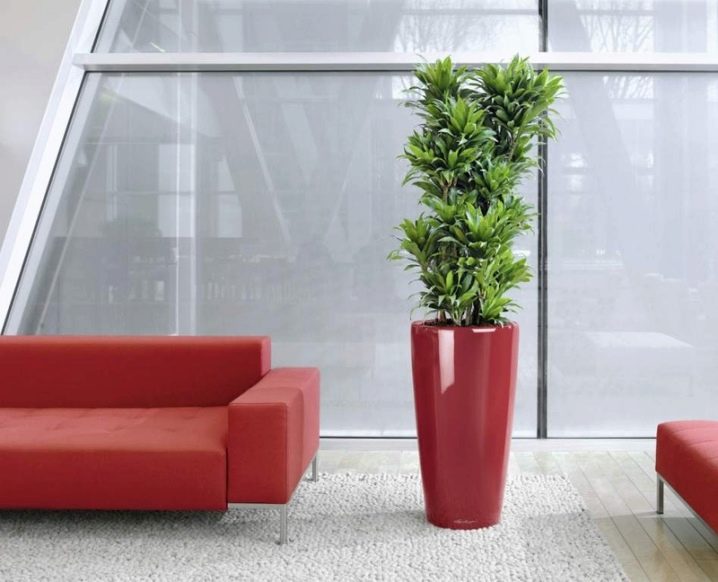
The following factors should be considered to maintain plant comfort.
- Dracaena shrubs are light-requiring, nevertheless, direct sunlight is completely contraindicated for them. Aggressive lighting can cause severe damage to the delicate leaves of dracaena. Therefore, placing them on the windowsill of a southern, brightly lit window is strongly discouraged. They will feel much better at a distance of a meter from the window.
- Given the climate in which the dracaena compacta is used to living in its natural environment, she is very fond of moisture. Due to the fact that the tropics have endowed their beauty with a craving for taking a warm shower, the plant must be regularly sprayed. In summer - once every two days, in winter - once a week. The main sign that the plant lacks moisture is wilting and falling leaves.
- The key to the health of dracaena is a properly selected soil. It can be easily found in specialized flower shops. It is there that the composition of trace elements that is most suitable for this plant will be selected. However, if for some reason there is no opportunity to acquire such soil, you can make soil at home.To do this, it is necessary to mix in a 1: 1 ratio the following components: turf, sand, peat and leafy soil.
- There must be drainage at the bottom of the flower pot. Otherwise, root rot and plant death cannot be avoided. Drainage can be used not only that sold in stores, it is quite possible to use broken brick or pebbles of the middle fraction. Do not forget that before planting, the do-it-yourself drainage must be processed - put in the most preheated oven for several hours.
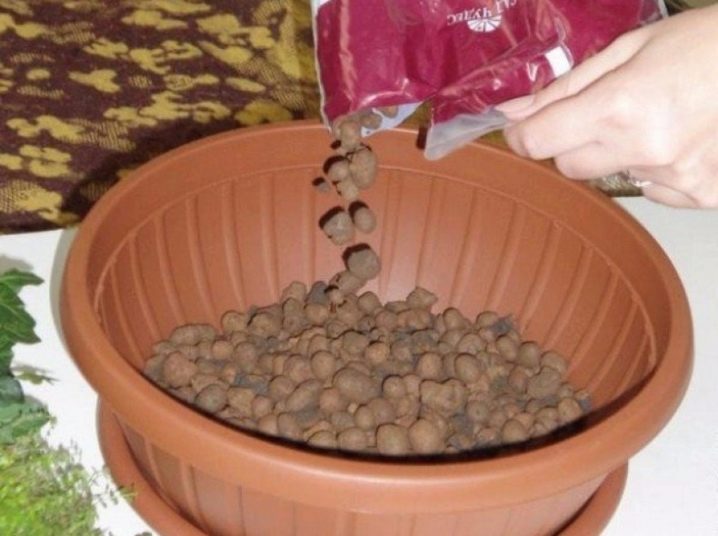
Subject to all the above rules, even a beginner in plant growing will master the care of dracaena, because this shrub is extremely rare.
Correct care
After purchasing a compact dracaena shrub, first of all, you should pay attention to watering. Despite the fact that the plant loves moisture and regular spraying, it absolutely does not tolerate soil flooding. That is, it is necessary to water abundantly, but without allowing waterlogging. Re-watering is considered the best option, after two or three centimeters of the upper soil has dried.
If in summer this happens about once every three days, in winter watering should be reduced to once a week. However, these figures are approximate, since it all depends on the temperature of your home.
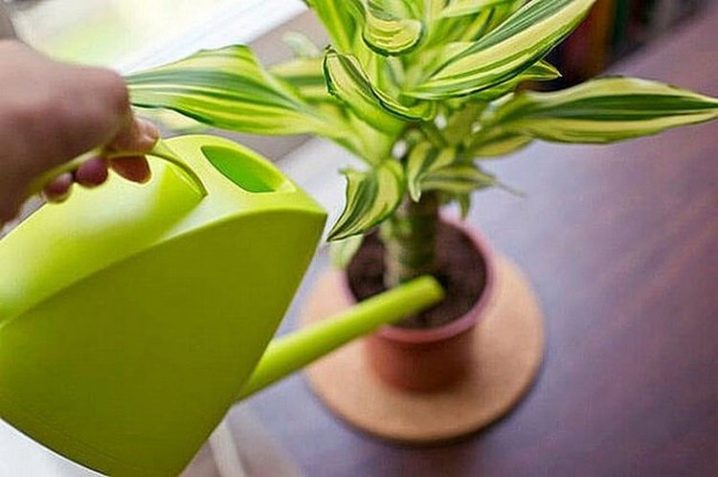
Just like the dracaena compacta does not like waterlogging, it does not tolerate drying out of the soil. If it dries slightly and forms a small coma, you should loosen the earth in a flower pot and try to prevent this from happening again. If the land was dry enough, it is better to immediately transplant the shrub into fresh loose soil.
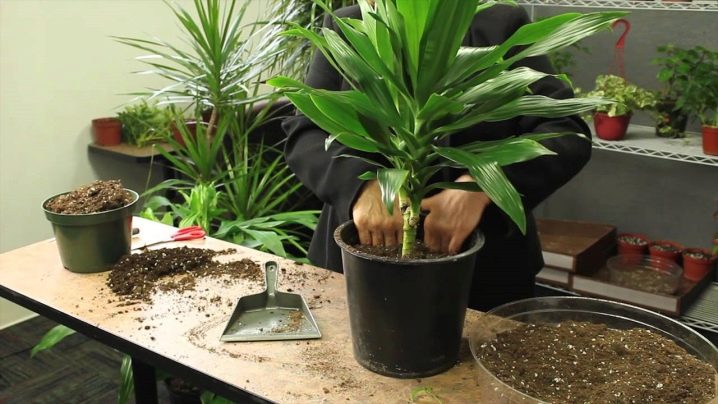
It is recommended to add top dressing during watering in summer and spring - when the dracaena begins to grow actively. To do this, you can use any universal top dressing, following the instructions on the package. In winter and autumn, it will also be useful to add top dressing when watering, but in an amount of half less than usual. This can be done no more than once a month.
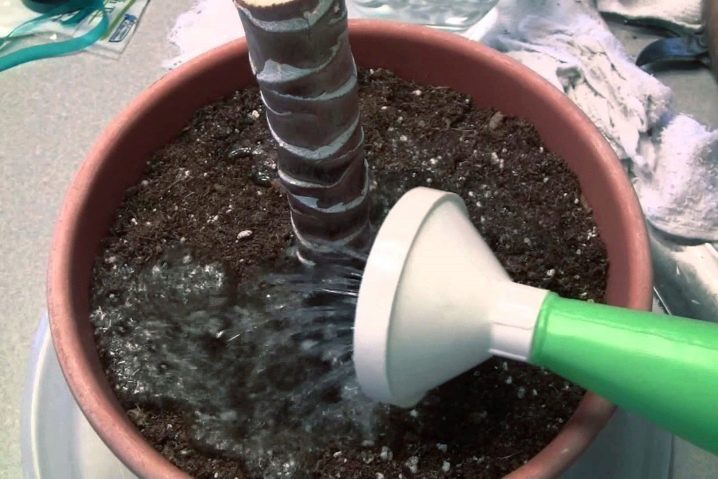
In addition to spraying, home care requires regular wiping of the plant sheets with a damp soft cloth. This simple manipulation will avoid the problems associated with the appearance of pests. For example, scale insects, worms or spider mites, which are especially fond of settling on dusty and unkempt plants.
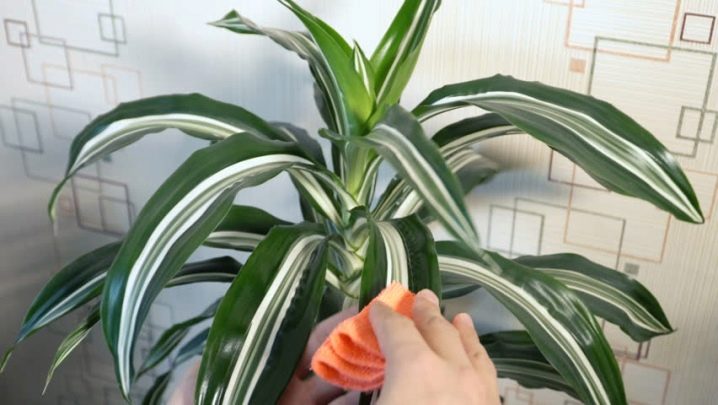
The first sign that the dracaena is being cared for is falling leaves or the appearance of brown spots on them. If this does happen, it is necessary to check whether the home care is fully followed.

Reproduction methods
Due to the fact that dracaena compacta practically does not bloom at home, and lateral shoots appear infrequently, its reproduction is carried out by cuttings. To do this, the top of the "mother" plant is cut off by 10 or 15 centimeters and placed in water at room temperature, in which one tablet of activated carbon has already been dissolved. The first roots appear on the cutting a week after pruning.
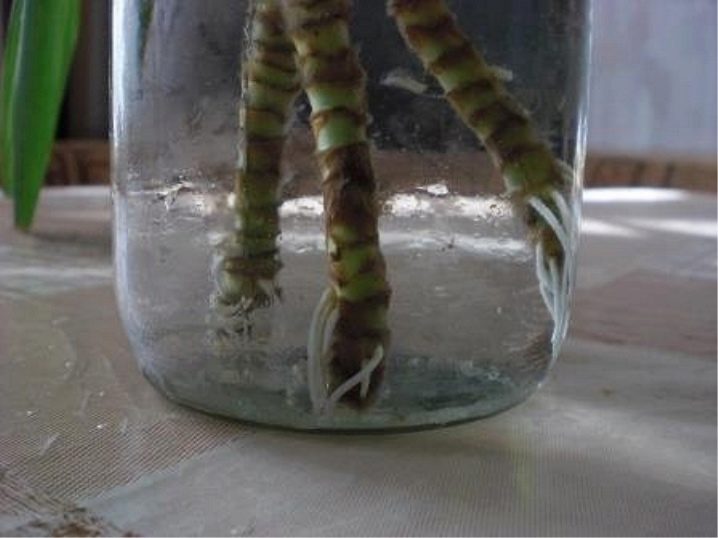
However, there are other ways of rooting cuttings. So, instead of water with coal, you can use:
- a mixture of ground coal with sand and peat;
- vermiculite or perlite - something that will be easier for a grower to acquire;
- special soil for dracaena or, if it was not possible to find it, soil for the palm family, which had been well steamed before.
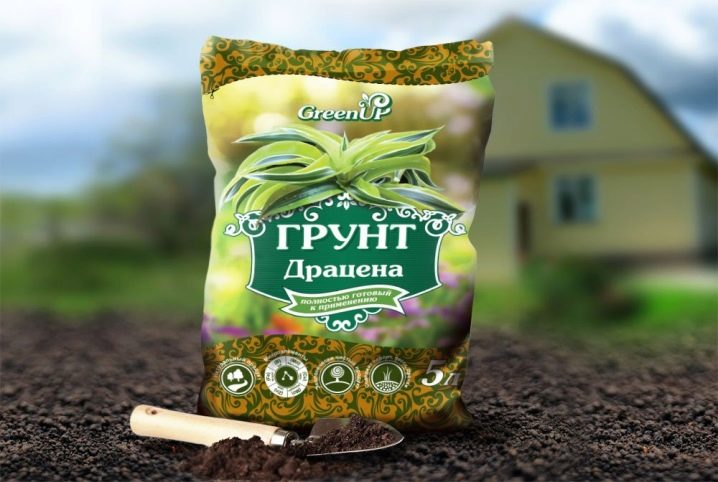
Such methods are less in demand by flower growers, but it is believed that propagating cuttings in this way makes their root system stronger.
Once the root system of the cuttings has grown sufficiently, they can be planted in the ground. It is recommended to plant several cuttings in one pot at once, close to each other. In the future, this will add splendor and beauty to such a bush.
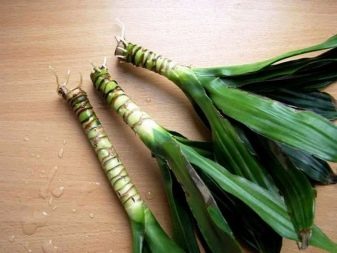
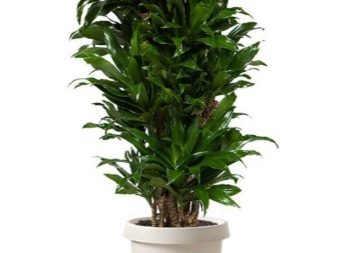
Do not forget that it is worth breeding dracaena only during the period of active growth, that is, in spring and summer.If you do this process in the fall and winter, the chances are high that the cuttings will simply die.

It is recommended to cut off the cuttings with a sharp knife, but in no case break off the top with your hands. Such a harsh impact can lead to the death of both plants.

For information on how to care for the compact dracaena at home, see the next video.




























The comment was sent successfully.